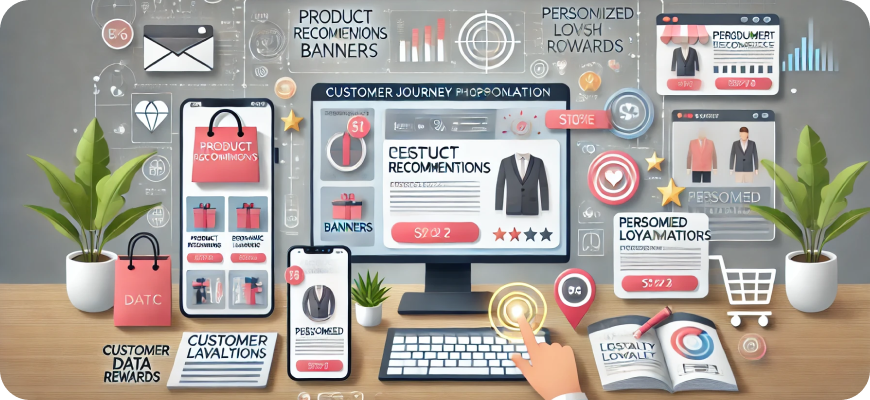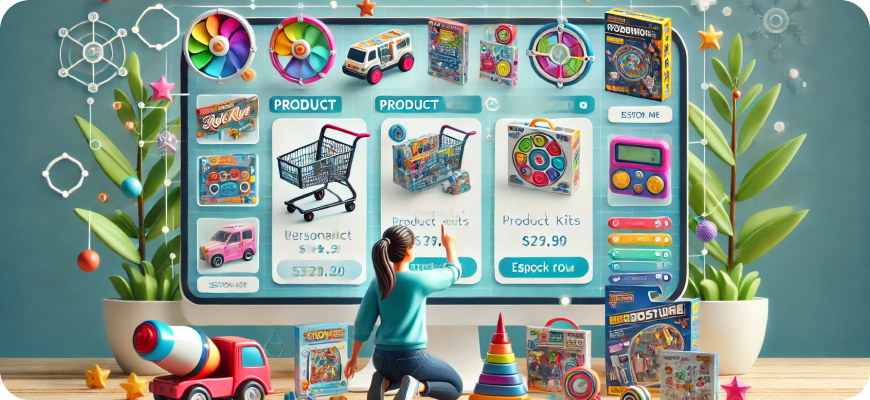All Payment Methods for Your E-Commerce: A Full Comparison
In today’s e-commerce landscape, offering a range of payment options is essential. Shoppers expect flexibility, convenience, and security, and they are more likely to abandon their cart if their preferred payment method is unavailable. From traditional credit card payments to mobile wallets and Buy Now, Pay Later options, each method has unique advantages, fees, and security considerations. In this article, we’ll dive into the primary payment methods for e-commerce, comparing them on ease of integration, cost, security, and customer experience to help you make the best choices for your online store.

1. Credit and Debit Cards
Credit and debit cards remain the most widely used payment methods in e-commerce. Visa, Mastercard, and American Express are accepted worldwide, making them essential for most online businesses.
Pros:
- Broad Acceptance: Most shoppers have access to a credit or debit card.
- Quick and Convenient: Customers can complete purchases in seconds with saved card details.
- Rewards and Points: Credit cards often provide incentives like cashback or points, encouraging usage.
Cons:
- Fees: Transaction fees for credit card payments typically range from 1.5% to 3.5%.
- Security Risks: Card data breaches can be costly for businesses and customers alike.
- Chargebacks: Customers can initiate chargebacks for disputed transactions, which can impact your bottom line.
Best for:
E-commerce stores looking to cater to a broad audience with a globally recognized and familiar payment method.
2. Digital Wallets
Digital wallets like PayPal, Apple Pay, and Google Pay provide a fast, secure way to pay online without entering card details for each purchase.
Pros:
- Enhanced Security: Digital wallets use tokenization, reducing the risk of fraud.
- Convenience: Stored payment information allows customers to check out quickly.
- Mobile-Friendly: Digital wallets are particularly useful for mobile shoppers.
Cons:
- Fees for Merchants: Fees for digital wallets vary, but PayPal typically charges around 2.9% plus a fixed fee per transaction.
- Compatibility Issues: Some digital wallets may not be supported on all e-commerce platforms.
Best for:
E-commerce stores with a high volume of mobile shoppers or international customers who prefer secure, fast payment options.
3. Bank Transfers and Direct Debit
Bank transfers and direct debits allow customers to make payments directly from their bank accounts, typically without credit cards.
Pros:
- Lower Fees: Bank transfer fees are often lower than credit card fees, especially for large transactions.
- Reduced Chargebacks: Since these are direct payments, chargeback risk is reduced.
- Security: Bank transactions often have strong security protocols, making them secure for large purchases.
Cons:
- Longer Processing Times: Bank transfers can take 2-3 business days, which may delay order fulfillment.
- Limited International Acceptance: Bank transfers are usually more popular in specific regions, like Europe (e.g., SEPA) and Asia.
Best for:
E-commerce stores that offer high-ticket items, where security and lower transaction fees are prioritized over speed.
4. Buy Now, Pay Later (BNPL) Options
Buy Now, Pay Later (BNPL) services, such as Afterpay, Klarna, and Affirm, allow customers to split their purchase into installments, paying over time without traditional credit checks.
Pros:
- Increases Conversion Rates: BNPL options allow customers to make purchases they might not afford upfront.
- No Credit Card Required: Customers can make purchases even if they don’t have credit cards.
- Higher Average Order Value: BNPL options often encourage customers to spend more.
Cons:
- Higher Fees for Merchants: BNPL providers typically charge higher fees than standard credit card fees.
- Potential for Returns: Some customers may return items after only paying the first installment.
- Limited Availability: Some BNPL options may not be available in all regions or for all types of products.
Best for:
Retailers selling mid-to-high-ticket items, looking to reduce friction in the purchasing process and boost conversion rates.
5. Cryptocurrency
Cryptocurrency payment options like Bitcoin, Ethereum, and Litecoin offer a decentralized, secure method for online transactions, often at a lower cost.
Pros:
- Low Transaction Fees: Cryptocurrency transactions are usually lower in fees than traditional payment methods.
- Security and Privacy: Transactions are decentralized and secure, reducing fraud and theft risks.
- Attracts Tech-Savvy Customers: Cryptocurrency appeals to tech-oriented and privacy-conscious consumers.
Cons:
- Price Volatility: Cryptocurrency values fluctuate, impacting the value merchants receive if they don’t convert immediately to fiat.
- Limited Customer Base: Adoption is still limited to a niche market.
- Regulatory Challenges: Cryptocurrency regulations vary widely, impacting adoption and usage.
Best for:
Businesses targeting tech-savvy or privacy-focused customers, particularly in industries where early adopters of cryptocurrency are common.
6. Prepaid Cards and Gift Cards
Prepaid cards and gift cards allow customers to pre-load funds onto a card that can be used online, making them popular for gifting and budgeting.
Pros:
- Budget-Friendly for Customers: Prepaid cards limit spending to the balance on the card.
- No Credit Required: Customers without bank accounts or credit cards can still make purchases.
- Customizable Gift Options: Branded gift cards can encourage repeat business and brand loyalty.
Cons:
- Limited Funds: Prepaid cards often have a balance limit, which can limit the size of purchases.
- Security Risks: Lost or stolen prepaid cards may be difficult to recover, especially if they are not registered.
Best for:
E-commerce stores targeting gift buyers or customers without access to traditional credit or bank accounts.
7. Mobile Payments
Mobile payments are becoming increasingly popular, with options like Apple Pay, Samsung Pay, and Google Wallet allowing customers to pay directly through their mobile devices using NFC (Near Field Communication) technology.
Pros:
- Fast and Convenient: Mobile payments make checkout fast and easy, particularly for mobile shoppers.
- Enhanced Security: Mobile payments are encrypted and use biometric verification, reducing fraud.
- Ideal for Mobile Commerce: With mobile shopping on the rise, mobile payments are particularly convenient for mobile-first shoppers.
Cons:
- Platform Dependence: Mobile payments require specific devices or apps, which may exclude certain customers.
- Limited Global Adoption: Mobile payments are still growing, but not universally adopted by all demographics.
Best for:
E-commerce stores with a significant mobile user base or those seeking to simplify and expedite the checkout process for on-the-go shoppers.
8. Invoice and Pay Later Options
Invoice and Pay Later options, often used in B2B e-commerce, allow customers to place an order, receive an invoice, and pay within a specified period after delivery.
Pros:
- Increases Trust: Allows customers to receive goods before paying, increasing trust and encouraging larger orders.
- Ideal for B2B Transactions: Many businesses prefer invoicing for accounting and budgeting purposes.
- Flexible Payment Terms: Customizable payment terms (e.g., Net 30) make this method convenient for businesses with fluctuating cash flows.
Cons:
- Credit Risk: Invoice-based payments carry the risk of late payments or defaults.
- Administrative Effort: Managing invoicing requires extra resources and follow-ups to ensure payments are made on time.
Best for:
B2B e-commerce businesses or high-trust relationships with customers that require flexible payment terms.
9. E-Checks and ACH Transfers
E-Checks and Automated Clearing House (ACH) transfers provide an electronic alternative to traditional paper checks, allowing customers to pay directly from their bank accounts.
Pros:
- Lower Processing Fees: ACH transfers usually have lower fees than credit cards, making them economical for larger transactions.
- Secure Transactions: ACH payments are regulated and secure, reducing fraud risks.
- Ideal for Subscriptions and Recurring Payments: ACH is effective for recurring billing in subscription-based businesses.
Cons:
- Longer Processing Times: ACH transfers can take several days to process, delaying order fulfillment.
- Limited International Use: ACH is typically restricted to the U.S., while similar systems like SEPA operate in Europe.
Best for:
Businesses with a high volume of transactions, especially for subscriptions or B2B transactions.
10. Cash on Delivery (COD)
Cash on Delivery (COD) is still a common payment method in certain regions, especially in countries where credit and debit card penetration is low or where trust in online payments is lacking.
Pros:
- No Upfront Payment Required: Customers are more likely to purchase if they only have to pay once the product is delivered.
- Reduces Fraud Risk for Customers: Since payment is made upon receipt, customers feel more secure.
Cons:
- Higher Return Rates: COD orders often have higher return and cancellation rates.
- Cash Handling Costs: Managing cash payments adds administrative costs and logistical challenges.
Best for:
Businesses operating in regions with low credit card penetration or customers who prefer not to pay online.
Comparison Summary Table
| Payment Method | Pros | Cons | Best for |
|---|---|---|---|
| Credit/Debit Cards | Broad acceptance, quick & convenient | Fees, security risks, chargebacks | General e-commerce stores |
| Digital Wallets | Security, convenience, mobile-friendly | Fees for merchants, compatibility | Stores with mobile or international clients |
| Bank Transfers | Lower fees, secure for large purchases | Longer processing, limited globally | High-ticket item sellers |
| BNPL (Buy Now, Pay Later) | Boosts conversion, increases order value | High fees, limited availability | Mid-to-high-ticket item stores |
| Cryptocurrency | Low fees, attracts tech-savvy customers | Volatility, niche market | Tech-oriented stores |
| Prepaid/Gift Cards | No credit required, budget-friendly | Limited funds, security risks | Gift-focused or underbanked customers |
| Mobile Payments | Fast, secure, ideal for mobile commerce | Platform-specific, limited adoption | Mobile-first e-commerce |
| Invoice & Pay Later | Increases trust, ideal for B2B | Credit risk, requires management | B2B businesses |
| E-Checks/ACH | Lower fees, secure | Long processing, limited internationally | Subscription and recurring services |
| Cash on Delivery (COD) | No upfront payment, reduces fraud risk | Higher returns, cash handling costs | Regions with low card penetration |

Conclusion
Offering diverse payment methods is crucial for enhancing customer satisfaction and minimizing cart abandonment. By understanding the unique benefits, costs, and security aspects of each option, you can tailor your payment offerings to align with your customers’ preferences and geographical needs. In 2025, having flexible, secure, and user-friendly payment methods will not only boost conversions but also foster customer trust and loyalty. Consider the needs of your target audience, and implement the right mix of payment options to maximize your e-commerce success.






